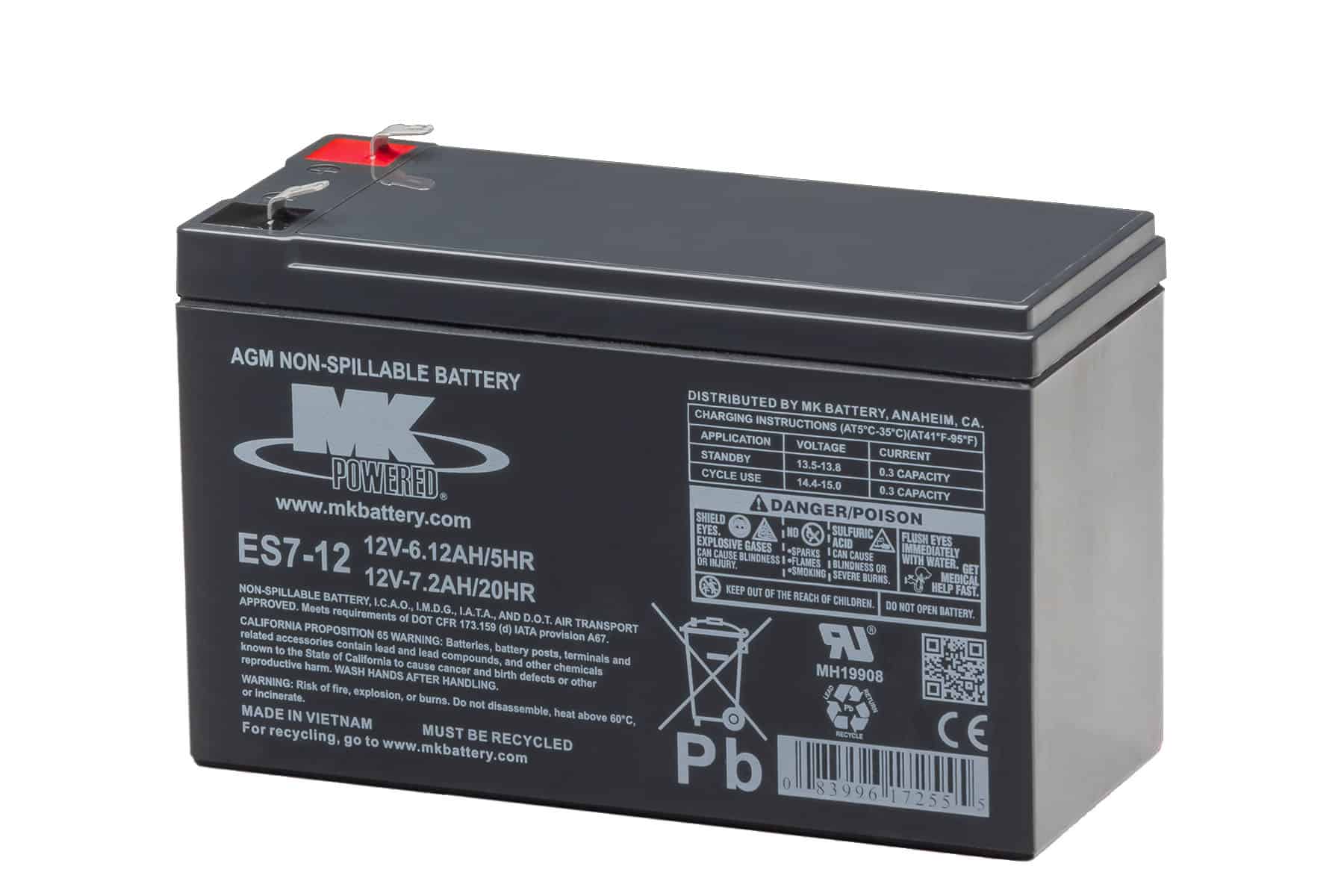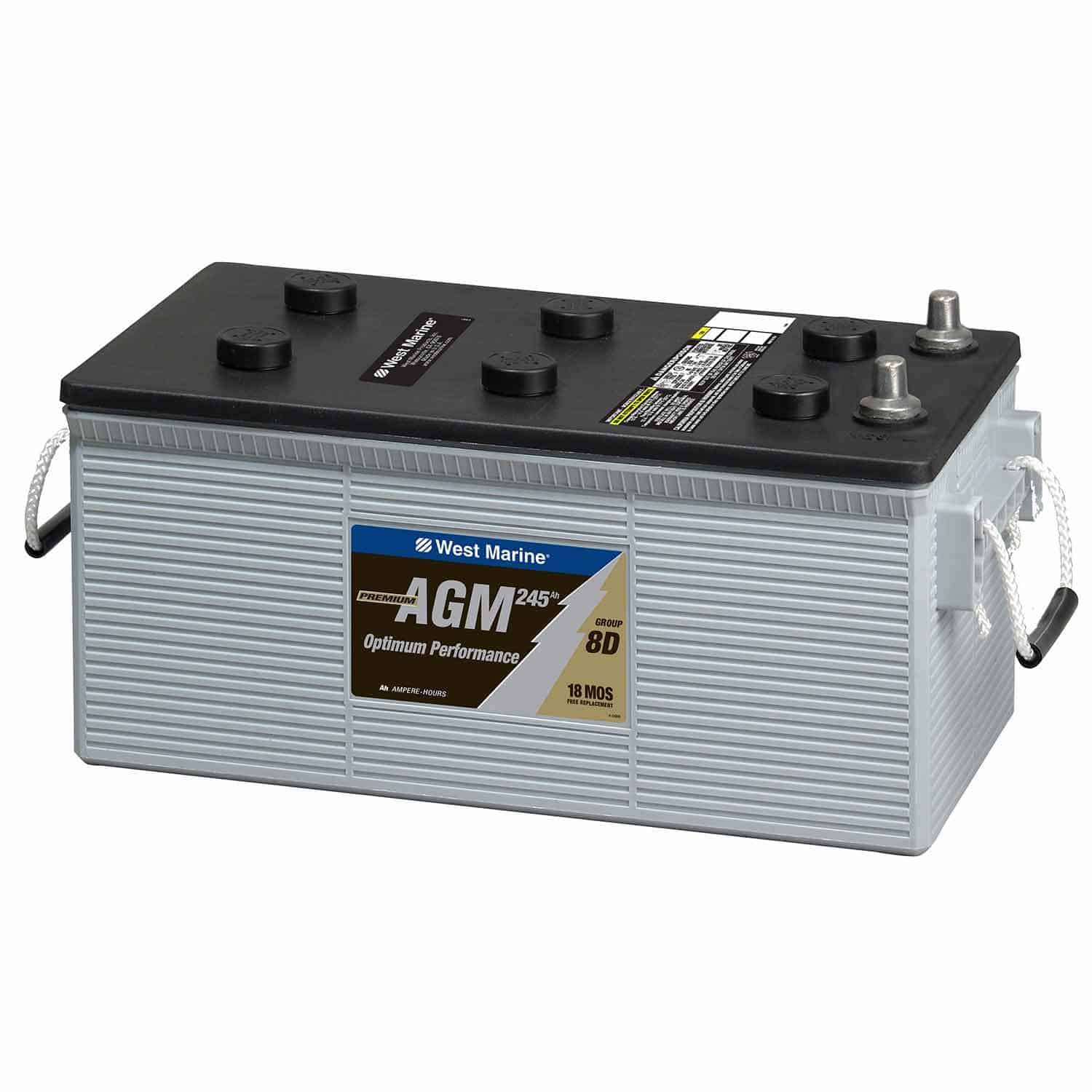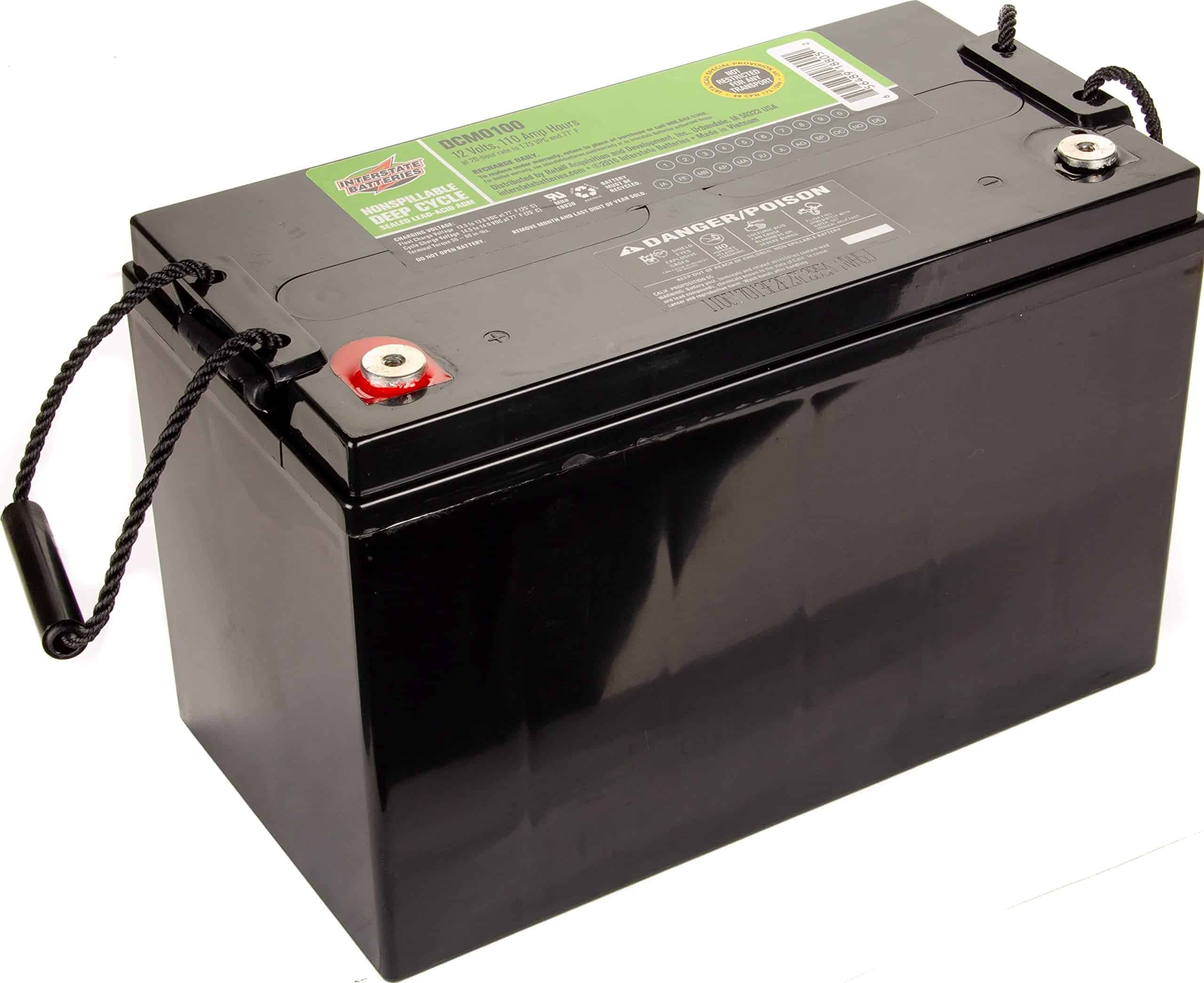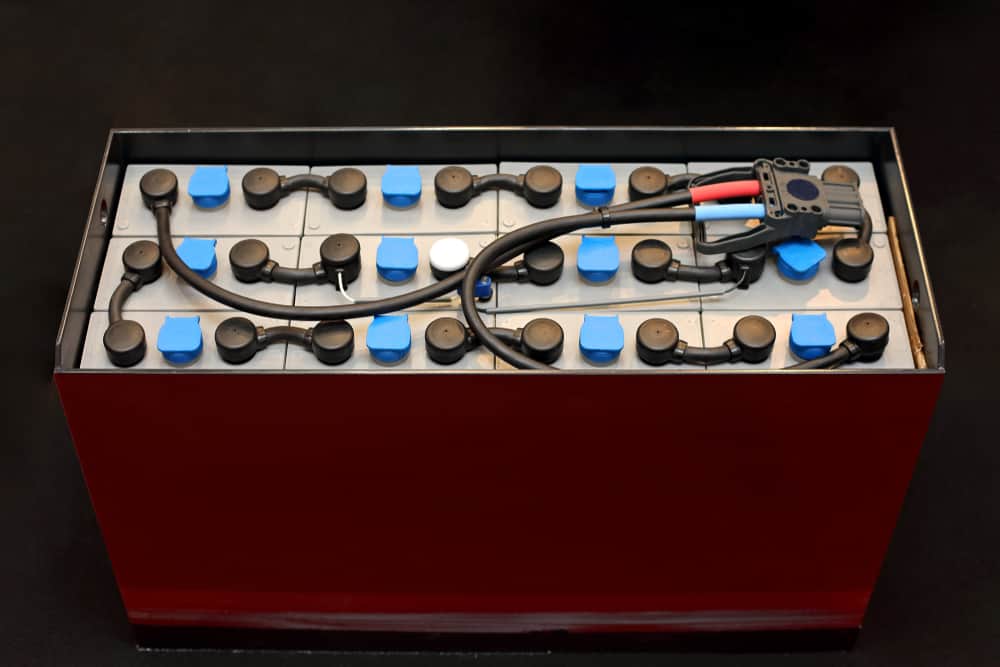No matter the make and model, vehicles use either an AGM battery or a deep cycle battery, but what’s the difference between the two?
While the most common type is the deep cycle or flooded lead acid battery, In this article, we’ll be reading how these battery lineups stack against each other and related information to help you choose the most workable option for your vehicle.
Table of Contents
Difference Between AGM and Deep Cycle Batteries
The Absorbent glass mat or AGM batteries are an improved version of the traditional deep cycle or lead acid batteries. Besides getting familiar with the differences, you’ll surely learn the similarities as we scroll through the text.

1. Working Mechanism
The elemental composition of both batteries is the same as they have identical electrolyte liquids made of sulfuric acid and water and lead plates for the chemical reaction to occur. Oxygen and hydrogen gases are produced by-products during the reaction.
However, their working mechanism still has some differences. While the lead acid battery vents out the gases, AGM batteries don’t produce many gases because of the unavailability of free-flowing electrolytes.
While no hydrogen is generated, the chemical reaction in the battery does produce oxygen that is reabsorbed at the negative plate.
- Flooded Lead Acid Battery
It contains lead plates immersed in electrolytes. The gaseous by-products are vented out, resulting in water loss. Therefore, the electrolyte solution depletes over time and needs to be replenished regularly. As a general rule of thumb, the evaporated electrolyte liquid levels can be replenished by adding distilled water.
- AGM Battery
Besides having the same lead plates and electrolyte liquid, these AGM deep cycle batteries have fiberglass mats placed between the plates. These mats keep the liquid suspended and prevent it from free-flowing inside the battery.
AGM batteries are sealed lead acid batteries that produce gases recombined with the electrolyte solution. If excess gases are made, there’s a vent to release the gases and lower the internal pressure.
2. Durability and Shock Resistance
The AGM battery has a better build quality and is more durable than the deep cycle battery. The fiberglass mats sandwiched in the lead plates are snugged in, making the battery shock and vibration-resistant.
This durability and resistance make the AGM battery a top pick in motorsports. Deep cycle batteries, on the other hand, can get damaged if they are not mounted securely.
3. Maintenance Requirements

AGM batteries produce little to no gassing, making it a feasible choice for vehicles with battery enclosures in places like the trunk, below the driver’s seat, or any other area that’s hard to reach.
In contrast, a deep cycle battery needs its electrolyte solution to be kept at optimum levels and in a well-ventilated space to release the gases produced.
4. Power Output And Internal Resistance
The AMG battery’s internal resistance is the lowest when comparing lead-acid batteries. Its internal resistance is only 2%, whereas the deep cycle battery has an internal resistance of 10 to 15%.
Low internal resistance translates to improved voltage output. The AGM battery is better equipped to handle significant power demands, making it the first choice when looking into different lead-acid battery types.
5. Mounting And Spillage
The AGM battery is spill-proof and can be installed in almost any configuration except by turning it upside down. However, the deep cycle battery has a free-flowing electrolyte solution that needs to be kept upright to prevent spillage.
6. Charging Time And Depth Of Discharge
A flooded lead acid battery charges slower than an AGM battery. This happens due to the increased internal resistance interfering with the charging.
Regarding the depth of discharge, the lead acid battery has 50% DoD, whereas the AGM battery has 80% DoD, making the AGM battery an excellent choice for heavy load operations.
However, both types of batteries cannot be discharged below 50%, unlike the lithium-ion battery type, which can be discharged completely.
7. Overcharging Tolerance

The lead-acid battery is more tolerant to overcharging than an AGM battery. Overcharging the AGM or SLA batteries (sealed lead-acid) shortens their lifespan and leads to a thermal runaway. Using a regulated battery charger is recommended for SLA batteries to control the amps and volts and achieve faster charging.
8. Temperature Resistance
Typically, AMG batteries work better at different temperatures than deep-cycle batteries. A lead-acid battery will freeze in cold temperatures, resulting in the plates expanding and the battery’s case cracking and leaking.
In contrast, the AGM or SLA battery is resistant to cold weather and won’t crack or leak. Likewise, one extreme heat, the electrolyte solution in deep cycle batteries will evaporate, leading to poor performance.
9. Battery Life And Self-Discharging Capacity
A typical lead-acid battery lasts from 3 to 5 years, whereas the SLA battery can survive up to 7 years. The low self-discharge rate of the AGM battery makes it a superior choice to flooded batteries.
10. Chemical Changes
Corrosion affects the conventional deep-cycle battery more, leading to spills and leaks. Sulfation affects both battery types when not used for extended periods.
Regular maintenance and a timely visit to the service center can keep issues like corrosion at bay. These issues affect the efficiency and performance of the battery.
11. Safety
When comparing both batteries, AGM batteries are safer. These batteries are tolerant of changing temperatures, provide a longer run time, can handle heavy loads, and are durable enough to be used in extreme environments. Your AGM battery won’t spill the electrolyte or get cracked.
12. Pricing
The lead-acid battery is cost-effective, while the AGM counterparts are three times the cost.
Comparing The AGM Battery With Other Deep Cycle Battery Types
1. AGM VS Gel Battery
The gel cell battery is sealed like the AGM battery and is primarily used in cell phones, marine equipment, vehicles, etc. Performance-wise, the AMG surpasses the gel battery as the rated capacity of the gel cell battery decreases comparatively faster.
While the AGM battery uses fiberglass to suspend the electrolyte liquid, the battery keeps the electrolytes suspended in gel form using silica.
2. Lithium Batteries VS AGM Batteries
Lithium-ion batteries have already replaced many batteries and are used in deep cycling applications, just like the AGM battery. While the AGM has an 80% DoD, the li-ion battery can be discharged entirely without affecting the output or performance.
The lithium-ion battery can be charged and discharged 10,000 times when comparing cycle life, while an AGM lasts 500 charging and discharging cycles.
Furthermore, the weight of the lithium-ion battery is much lower and is much more efficient than its counterpart. However, the initial cost of a lithium-ion battery is much higher than an AGM battery.
Taking Care Of Your AGM Battery
- Storing the battery in a discharged state will lead to sulfation, making it difficult to recharge completely. When storing the battery, remember to recharge it every four months and store it in a cool and dry place.
- Avoid overcharging the battery as it will reduce performance and lifespan. When charging the battery, ensure the voltage and charger are working fine.
- Avoid using a third-party charger unless recommended by the manufacturer. If you have a faulty charger, it’s best to purchase an original charger from your battery manufacturer. You can also refer to the user manual given with the battery to know which charger is a feasible option.
- Use the battery sparingly or entirely discharge the battery as it will shorten its lifespan.
Maintaining Your Lead Acid Battery
- Ensure the electrolyte levels are adequate by checking weekly. This practice allows the battery to work at optimum efficiency. Remember to only use deionized and distilled water with the battery. The electrolyte levels should always be replenished after charging, not before or during the charging session.
- Charging the battery with an incompatible charger will result in a faulty battery. Always use the recommended charging equipment.
- Allow the battery to completely charge when plugged in and avoid interrupting the charging cycle. This can lead to permanent damage, reducing the lifespan and performance.
- Lead acid batteries cannot be discharged completely. Most vehicles and equipment using this battery type have battery discharge indicators that turn on when the charging is low. Keeping an eye on the discharge indicator is crucial.
- Whenever you charge the battery, let it cool for at least two hours before plugging it back in. Using the battery while hot can lead to damage and a possible leak.
- During maintenance, check the terminals for any signs of corrosion, ensure the cables are intact, and the charging wires are plugged in. Clean the lids and wipe off any debris collected on the battery.
- Check the battery enclosure and ensure the battery is fastened. Leaving the battery loose will only cause it to malfunction.
Final Thoughts
As it’s evident from the comparison that each battery type has its pros and cons. While the lead-acid battery is cost-effective, they are not as efficient as the AGM.
In a nutshell, the AGM or SLA battery would be an excellent choice if you’re looking for performance and durability without worrying about the price tag. However, a lead-acid battery will suffice if you need a simple car starter battery.
